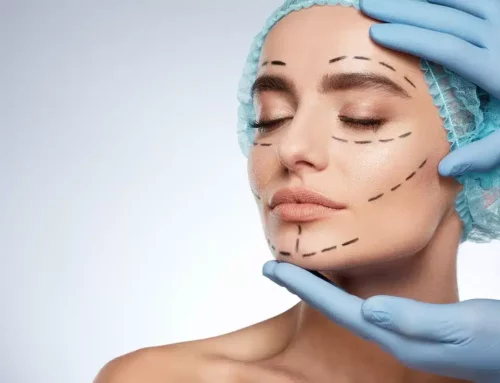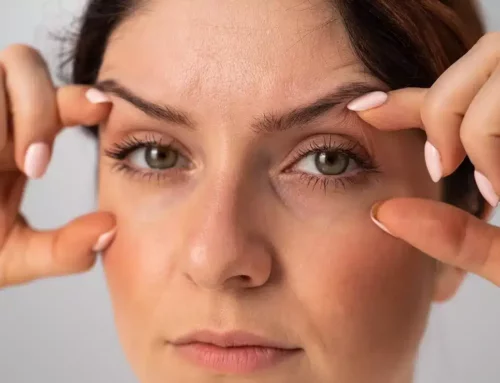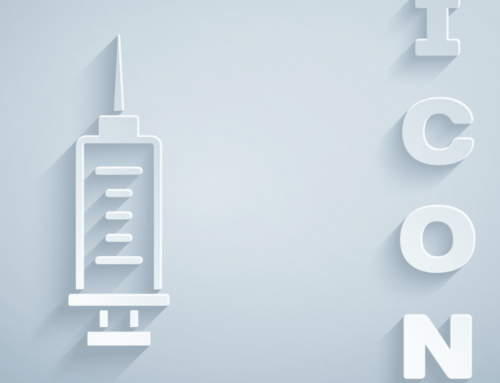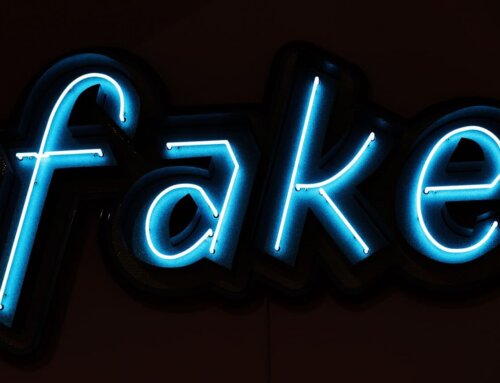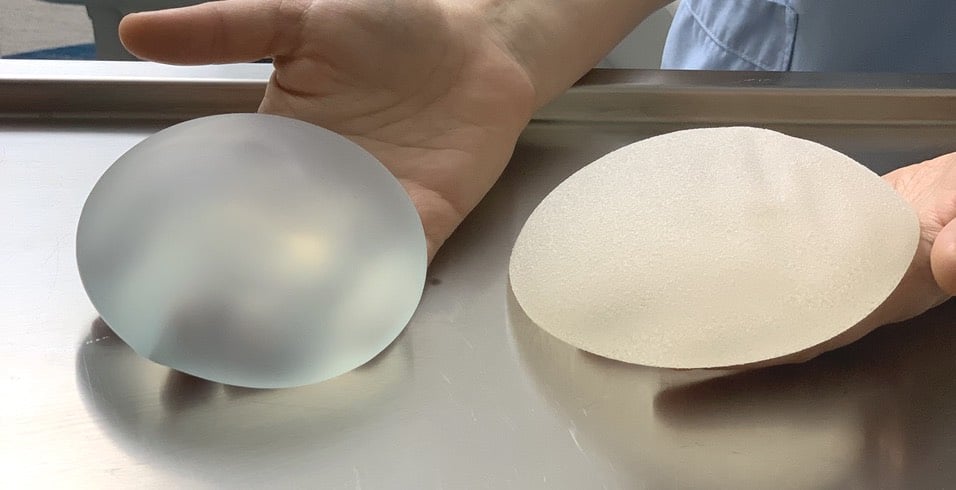
A smooth MOTIVA implant on the left, an Allergan textured implant on the right
The French National Agency for the Safety of Medicines (ANSM) will announce today a major and historic decision. In a health policy decision, it will prohibit the marketing, distribution, advertising and use of macrotexurated and polyurethane foam-covered breast implants.
This decision concerns ALLERGAN Natrelle Biocell implants, ARION textured monobloc implants, SEBBIN textured anatomical implants, NAGOR textured implants, EUROSILICONE Matrix textured implants and POLYTECH textured and polyurethane foam covered implants.
We fully agree with this decision, which is perfectly logical considering the recent increase in cases of large cell anaplastic lymphoma or LAGC (70 cases in France, about 700 worldwide), the vast majority of which are related to the use of macrotextured implants.
We had anticipated this decision for 18 months by using smooth Motiva Ergonomix implants in more than 90% of our cases.
We have never used ALLERGAN implants or other macrotextured implants, but we have used POLYTECH implants covered with polyurethane foam and MENTOR Siltex implants extensively because they have known benefits, particularly in preventing capsular contracture.
Until 2015, polyurethane foam-covered implants were marketed by the brands SILIMED (Brazil) and POLYTECH (Germany). Almost all cases of LAGC related to polyurethane-covered implants (approximately 50 cases, mostly in Australia) are related to the SILIMED brand, which presents an identical risk to the ALLERGAN brand (1 case out of 3000).
The SILIMED brand has been banned in France since 2016 due to defects in the production of implants.
For the moment, it seems that one or two cases of LAGC have been reported with the POLYTECH brand.
This difference in the rate of LAGC between the two brands, which offer implants of the same type, seems to be explained by a phenomenon of delamination (separation) of the polyurethane foam on SILIMED implants, which transforms them into macro-textured implants. This phenomenon is little or not observed with Polytech implants.
Thus, we can globally retain that the risk of LAGC is almost nil with smooth implants, 1 case out of 3000 with macro textured or SILIMED polyurethane implants and 1 case out of 30,000 to 50,000 for micro textured or POLYTECH polyurethane implants. Unfortunately, these figures are likely to change over time.
The decision of the ANSM is therefore good and protects the population from a rare but serious complication.
What are our recommendations if you are a carrier of the implants concerned by the ANSM decision?
The official authorities do not recommend preventive ablation for these women (and therefore do not justify reimbursement by social security as was the case with the PIP implants). Patients should consult their surgeon on an annual basis and have a follow-up MRI to detect any wear or tear. In case of rupture, removal will be recommended and reimbursed.
We recommend that women with ALLERGAN or similar macrotextured or SILIMED polyurethane implants seriously consider removal with complete capsulectomy in view of the non-negligible rate of LAGC, which most often occurs between 7 and 10 years after implant placement, even in the absence of rupture on MRI (knowing that this procedure will not be reimbursed by the health insurance).
Indeed, given the risk of 1 case in 3000, it does not seem ethical to us to propose to these patients a simple radiological surveillance of LAGC which in fact does not exist (LAGC can occur suddenly and without warning signs).
As for microtextured and POLYTECH polyurethane implants, there is a theoretical risk, but preventive removal seems excessive to us unless there are signs of wear of the implant on MRI.
In cosmetic surgery, if the complex is major, smooth implants can be considered. However, patients should carefully consider the benefits of a simple removal without change.
In reconstructive surgery after removal of the breast, we recommend removal of the implant and replacement with a reconstruction technique using your own tissue (autologous DIEP, PAP or MS Latissimus Dorsi flap).
Find all brands of breast implants here.

